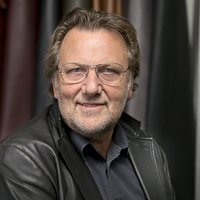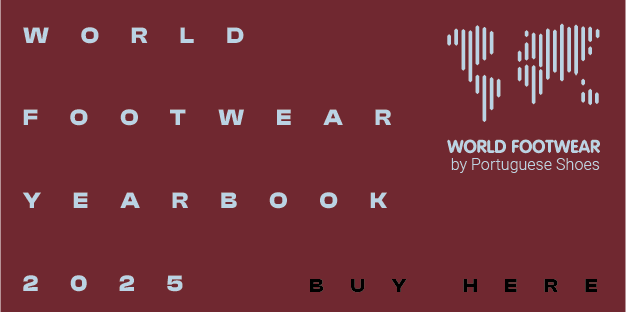Ecco's CEO live on World Footwear

The Danish footwear manufacturer and retailer has posted an 8.0% increase in full-year profit, in a record set of results in 2013
Danish footwear manufacturer and retailer Ecco recently announced its "best ever results", with total net sales increased by 47.9 million euros, a 4.4% growth from 2012 (6.3% at constant foreign exchange rates). Going back to 2009, when the group reported net revenue of 677 million euros, growth rate in the period 2009-13 is 67%, expressing an outstanding performance of the groups’ revenue.
Profit before tax reached 165 million euros equivalent to an increase of 8.0% over previous year’s results. This produced a profit ratio of 14.6%, against 14.1% in 2012. The year’s result for the group was 106.4 million euros, an increase of 15.8% compared to 2012, and 164.7% compared to 2009. Ecco’s cash flow and balance sheet remained strong in 2013, with working capital increasing to accommodate continued growth.
Following the presentation of this impressive set of numbers, World Footwear interviewed Mr. Dieter Kasprzak, Ecco’s President and CEO, to talk about the current momentum of the company and to discuss its main challenges, as well as the future of the footwear industry.
Last month, Ecco announced the company’s best ever results, when sharing its 2013 annual report. What were the main drivers of this excellent performance?
ECCO launched a significant number of new products and many became bestsellers. The special anniversary shoe, Ecco MIND, sold out very quickly and proved again that iconic designs last. ECCO continued to invest in upgrading its distribution in Europe, Asia, and North America. In 2013, 255 new shops and shop-in-shops were opened, bringing the total number of Ecco shops and shop-in-shops to 2 989. In addition, more than 300 shops were upgraded and refitted during 2013, underlining Ecco’s strategic commitment to offer consumers better shopping experiences. In 2013, China and Russia recorded particularly strong sales. In several markets, Ecco’s e-commerce grew significantly in 2013, becoming an increasingly important distribution channel. The sales of Ecco produced leathers to manufacturers of other premium and luxury brands experienced another year of rapid growth, rising by 58% to 82 million euros. Sales of leather goods and shoe accessories continued their positive trend, growing by 12.6% to 38 million euros.
During last year, you have announced a deep reorganization of your production footprint. What are the main reasons behind this internal re-structure and the decentralization of your production?
After our Thai factory was flooded in 2011, Ecco decided to change its factories, so no factory represented more than 20% of total capacity. This necessitated the move of 35% of Ecco’s production machinery. This again created a need for a tight control of Ecco’s growth to balance this against available capacity. We were successful in executing this during the year, and the operating margin improved from 15.0% to 16.2%. Controlled growth has been the key to Ecco’s success in 2013 and we will continue this strategy in 2014.
Ecco recently announced a new investment in Portugal totaling 15 million euros. What will be the main challenges of this new investment? What are the main objectives set for this new manufacturing plant?
Ecco’s shoe factory in Portugal is currently undergoing a thorough modernization. This marks a reopening of Ecco’s production in Portugal. The decision to reopen bulk production in Portugal has been taken in light of Ecco Portugal’s high degree of production flexibility, the fact that costs in Portugal have come down and finally to increase production capacity and flexibility close to Ecco’s European key markets. Ecco also has a shoe factory in Slovakia – in addition to its three Asian-based factories. Ecco has already created more than 200 new jobs in Portugal in connection with the re-start of the first phase of production. At full capacity, the number of employees is expected to be 1 200. Production in 2014 is projected to surpass 2 million pairs and, in 2015, reach 3 million pairs.
In 2013, the share of Ecco global sales reached 19% in America, and this is one of the regions where you have decided to invest a few years ago to ensure more intense markets’ diversification. Do you have any plans to open a manufacture plant in the American continent?
Ecco currently has the capacity that the company needs; so we have at this moment no plans to open more factories.
In your view, what will be the main challenges for the sector during the next few years?
We expect continued slow growth in Europe and high volatility in Asia and North America. The shoe industry will likely experience some changes taking place with small and medium sized companies being squeezed by global players who invest heavily in new markets, retail formats & e-commerce. We see that the retail environment will continue to undergo fundamental changes, with increased consolidation. Finally, increasing costs of production must be expected in traditional Asian production countries.
What priorities have been identified by Ecco as part of your long-term strategy?
We want value growth before volume growth and we must constantly design and produce better shoes and bags. In all areas of our business, we need to be better, improving the quality of everything we do. First and foremost, we must be innovative. Innovative thinking, design and decisive actions are the keys to Ecco’s future.
Profit before tax reached 165 million euros equivalent to an increase of 8.0% over previous year’s results. This produced a profit ratio of 14.6%, against 14.1% in 2012. The year’s result for the group was 106.4 million euros, an increase of 15.8% compared to 2012, and 164.7% compared to 2009. Ecco’s cash flow and balance sheet remained strong in 2013, with working capital increasing to accommodate continued growth.
Following the presentation of this impressive set of numbers, World Footwear interviewed Mr. Dieter Kasprzak, Ecco’s President and CEO, to talk about the current momentum of the company and to discuss its main challenges, as well as the future of the footwear industry.
Last month, Ecco announced the company’s best ever results, when sharing its 2013 annual report. What were the main drivers of this excellent performance?
ECCO launched a significant number of new products and many became bestsellers. The special anniversary shoe, Ecco MIND, sold out very quickly and proved again that iconic designs last. ECCO continued to invest in upgrading its distribution in Europe, Asia, and North America. In 2013, 255 new shops and shop-in-shops were opened, bringing the total number of Ecco shops and shop-in-shops to 2 989. In addition, more than 300 shops were upgraded and refitted during 2013, underlining Ecco’s strategic commitment to offer consumers better shopping experiences. In 2013, China and Russia recorded particularly strong sales. In several markets, Ecco’s e-commerce grew significantly in 2013, becoming an increasingly important distribution channel. The sales of Ecco produced leathers to manufacturers of other premium and luxury brands experienced another year of rapid growth, rising by 58% to 82 million euros. Sales of leather goods and shoe accessories continued their positive trend, growing by 12.6% to 38 million euros.
During last year, you have announced a deep reorganization of your production footprint. What are the main reasons behind this internal re-structure and the decentralization of your production?
After our Thai factory was flooded in 2011, Ecco decided to change its factories, so no factory represented more than 20% of total capacity. This necessitated the move of 35% of Ecco’s production machinery. This again created a need for a tight control of Ecco’s growth to balance this against available capacity. We were successful in executing this during the year, and the operating margin improved from 15.0% to 16.2%. Controlled growth has been the key to Ecco’s success in 2013 and we will continue this strategy in 2014.
Ecco recently announced a new investment in Portugal totaling 15 million euros. What will be the main challenges of this new investment? What are the main objectives set for this new manufacturing plant?
Ecco’s shoe factory in Portugal is currently undergoing a thorough modernization. This marks a reopening of Ecco’s production in Portugal. The decision to reopen bulk production in Portugal has been taken in light of Ecco Portugal’s high degree of production flexibility, the fact that costs in Portugal have come down and finally to increase production capacity and flexibility close to Ecco’s European key markets. Ecco also has a shoe factory in Slovakia – in addition to its three Asian-based factories. Ecco has already created more than 200 new jobs in Portugal in connection with the re-start of the first phase of production. At full capacity, the number of employees is expected to be 1 200. Production in 2014 is projected to surpass 2 million pairs and, in 2015, reach 3 million pairs.
In 2013, the share of Ecco global sales reached 19% in America, and this is one of the regions where you have decided to invest a few years ago to ensure more intense markets’ diversification. Do you have any plans to open a manufacture plant in the American continent?
Ecco currently has the capacity that the company needs; so we have at this moment no plans to open more factories.
In your view, what will be the main challenges for the sector during the next few years?
We expect continued slow growth in Europe and high volatility in Asia and North America. The shoe industry will likely experience some changes taking place with small and medium sized companies being squeezed by global players who invest heavily in new markets, retail formats & e-commerce. We see that the retail environment will continue to undergo fundamental changes, with increased consolidation. Finally, increasing costs of production must be expected in traditional Asian production countries.
What priorities have been identified by Ecco as part of your long-term strategy?
We want value growth before volume growth and we must constantly design and produce better shoes and bags. In all areas of our business, we need to be better, improving the quality of everything we do. First and foremost, we must be innovative. Innovative thinking, design and decisive actions are the keys to Ecco’s future.















